The generation that we have now was not further developed due to the lack of needs.
+45
Podlodka77
ALAMO
JohninMK
11E
TMA1
lancelot
Sujoy
Tsavo Lion
slasher
LMFS
Big_Gazza
owais.usmani
Azi
flamming_python
dino00
southpark
Hole
GunshipDemocracy
The-thing-next-door
GarryB
miketheterrible
franco
eridan
Arrow
Isos
eehnie
Vann7
max steel
ExBeobachter1987
jhelb
sepheronx
Mike E
kvs
Viktor
Morpheus Eberhardt
Hannibal Barca
magnumcromagnon
collegeboy16
Werewolf
TR1
Mindstorm
George1
Austin
TheArmenian
SOC
49 posters
Russian Nuclear Triad: Status and Warheads

ALAMO- Posts : 6703
Points : 6793
Join date : 2014-11-25
You are both right. That is why peaks in nuclear tests were usually connected with the technological progress of nuclear weapons.
The generation that we have now was not further developed due to the lack of needs.
The generation that we have now was not further developed due to the lack of needs.

GarryB- Posts : 38978
Points : 39474
Join date : 2010-03-30
Location : New Zealand
I would disagree that the nuclear warheads in Russian nukes are the same as 40 years ago... new requirements for small compact but still powerful warheads means different design solutions and of course for new doomsday weapons an overly powerful weapon would be useful for putting on the Poseidon drone.
Previous restrictions on nuclear warhead design was... will it be air droppable, can it fit into an aircraft bomb bay, will it fit on a reentry vehicle warhead on the end of a missile, will it fit inside the shell case of a 152mm artillery shell.
Well current questions are, how many can we pack into a SLBM or an ICBM or a long range cruise missile, but also how much raw power can we fit into a super sized torpedo called Poseidon and perhaps how many small nukes can we fit into thunderbird for it to deliver on its travels.
New technology and new materials and new ideas might make some things that were not possible before possible now, but how do you check they actually work?
BTW it wasn't that long ago that the Americans were talking about lifting the ban because they wanted dedicated penetrating bunker buster munitions and realised the only reliably way to achieve the effect they wanted (ie create an earthquake to collapse tunnels and bunkers over a large area) was with nuclear warheads.
Previous restrictions on nuclear warhead design was... will it be air droppable, can it fit into an aircraft bomb bay, will it fit on a reentry vehicle warhead on the end of a missile, will it fit inside the shell case of a 152mm artillery shell.
Well current questions are, how many can we pack into a SLBM or an ICBM or a long range cruise missile, but also how much raw power can we fit into a super sized torpedo called Poseidon and perhaps how many small nukes can we fit into thunderbird for it to deliver on its travels.
New technology and new materials and new ideas might make some things that were not possible before possible now, but how do you check they actually work?
BTW it wasn't that long ago that the Americans were talking about lifting the ban because they wanted dedicated penetrating bunker buster munitions and realised the only reliably way to achieve the effect they wanted (ie create an earthquake to collapse tunnels and bunkers over a large area) was with nuclear warheads.
kvs, jon_deluxe and Podlodka77 like this post

Podlodka77- Posts : 2589
Points : 2591
Join date : 2022-01-06
Location : Z
here is a good text for you...
RIA Novosti
11.02.2023;
08:00
"They can solve everything in a couple of minutes." Which country has the most nuclear missiles?
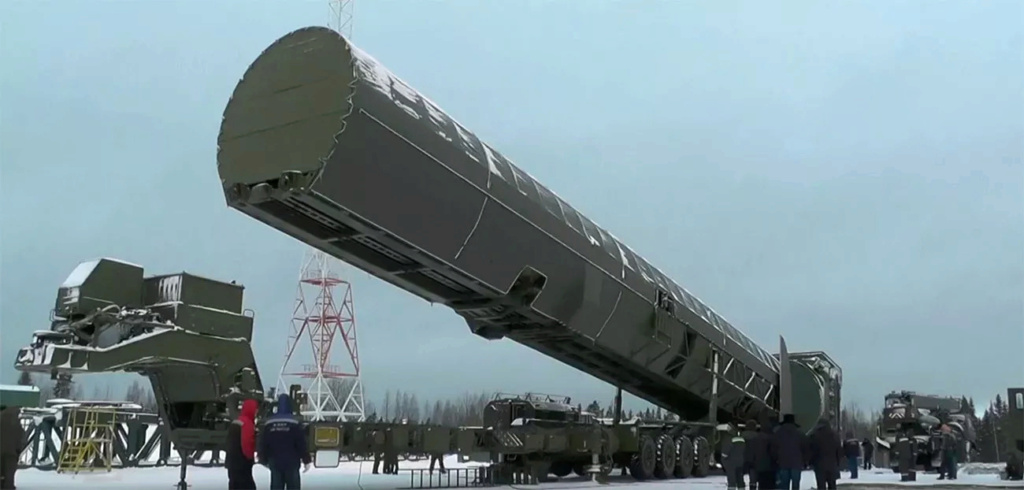
Demonstration of tests of the Sarmat strategic missile system. Archive photo
MOSCOW, February 11 - RIA Novosti. At the end of January, the doomsday clock was moved forward by ten seconds. Now they show 90 seconds to "nuclear midnight". All because of increased talk about the use of atomic weapons. Which countries are "keeping gunpowder dry" against the backdrop of a growing escalation - in the material of RIA Novosti.
League of Extraordinary Gentlemen
Now the nuclear club includes nine states, which are usually divided into old and new. The first include the five permanent members of the UN Security Council and the victors in World War II - the United States, Russia, Great Britain, France and China.
These countries managed to acquire retaliatory weapons before the adoption of a key document - the Treaty on the Non-Proliferation of Nuclear Weapons, which entered into force in 1970. Over time, 190 independent states joined it and still observe it.
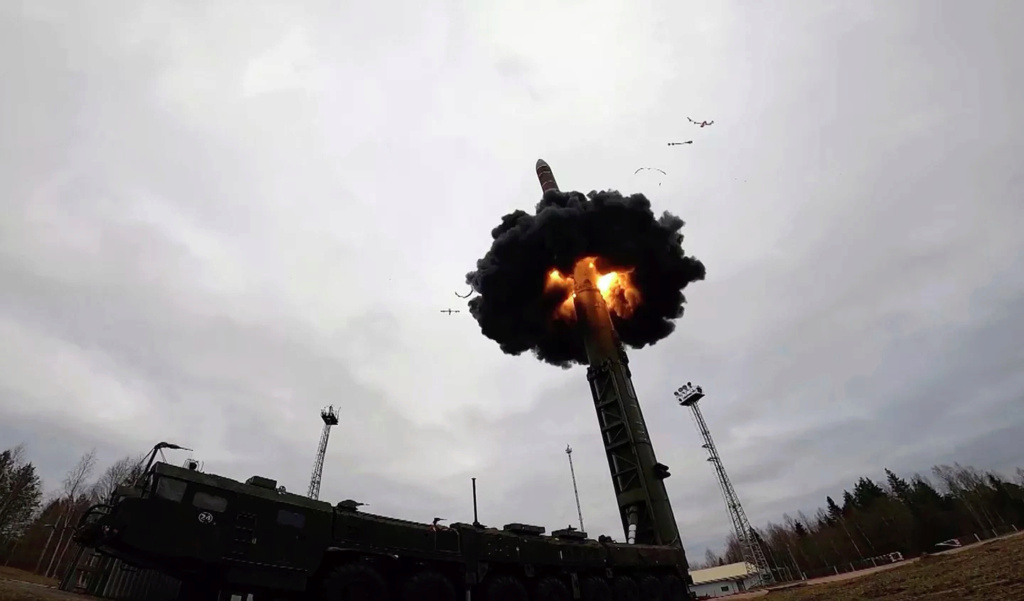
 Ministry of Defense of the Russian Federation
Ministry of Defense of the Russian Federation
Launch of the intercontinental ballistic missile RS-24 "Yars"
Only five countries refused to do so: India, Israel, Pakistan, North Korea (North Korea initially supported the treaty, but then withdrew from it) and South Sudan. All of them, with the exception of the young African state, also acquired a non-peaceful atom.
At the same time, Tel Aviv has never officially recognized its existence.
Parity leaders
Russia and the United States are the only ones who officially possess a full-fledged nuclear triad: intercontinental ballistic missiles, strategic aircraft capable of delivering weapons of mass destruction strikes, and submarines with submarine-launched ballistic missiles.
Moscow and Washington, according to experts from the Stockholm Peace Research Institute (SIPRI), accounted for 90 percent of all stockpiles of nuclear weapons in the world by January 2022:
—
deployed warheads: USA - 1744, Russia - 1588;
—
warheads in storage: Russia - 2889, USA - 1964;
—
the total number of warheads in service: Russia - 4477, USA - 3708;
—
the total number of warheads, taking into account those awaiting disposal: Russia - 5977, USA - 5428.
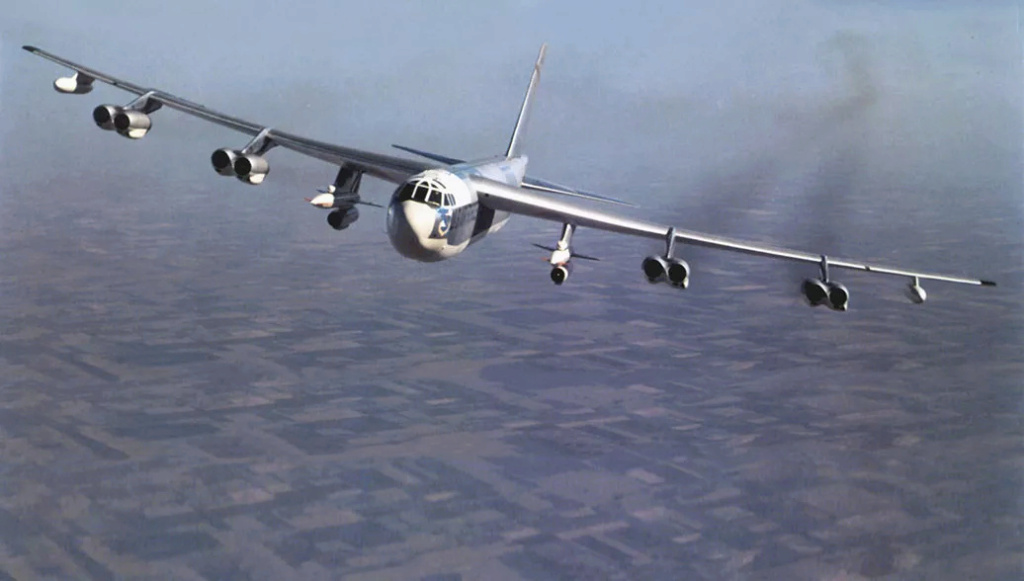
 Photo: Tinker Air Force Base History Office
Photo: Tinker Air Force Base History Office
American B-52 strategic bomber with AGM-28 Hound Dog cruise missiles on board
Lagging behind and catching up
Third place is questionable. Previously, it was occupied by France - the exact number of charges in service with the Fifth Republic is unknown. According to President Emmanuel Macron, there are "less than 300". Paris has sea and air carriers, previously there was also a land component of the nuclear triad, but in 1996 it was decided to deactivate medium-range ballistic missiles. The process took two years.
There is also no exact data on Chinese nuclear weapons. SIPRI believes that Beijing managed to bypass Paris and make 350 warheads. At the same time, the Pentagon announced back in November 2021 that China managed to create a full-fledged nuclear triad.
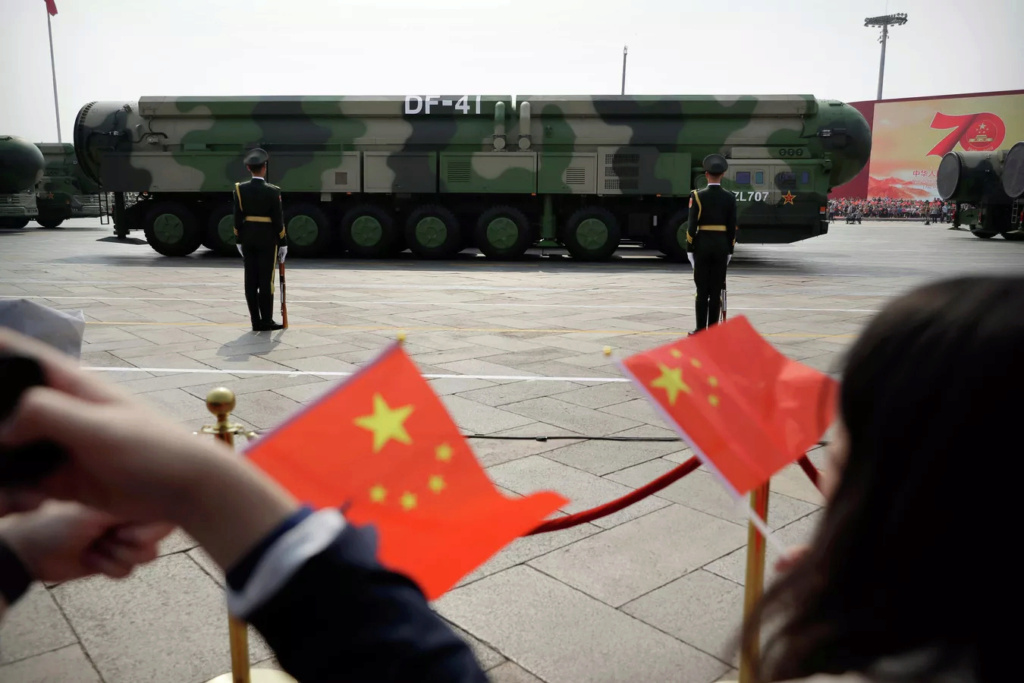
 AP Photo / Mark Schiefelbein
AP Photo / Mark Schiefelbein
Chinese solid-propellant intercontinental ballistic missile "Dongfeng-41" at the parade in Beijing
They do not want to stop there - by 2035, the Celestial Empire can produce about one and a half thousand warheads, which will allow it to achieve parity with the United States and Russia.
The UK has more modest reserves:
* 120 deployed warheads;
* another 60 are in storage;
* in total, including those awaiting disposal - 225.
Pakistan has close capabilities with India - 165 and 160 warheads, respectively. According to SIPRI, Israel is armed with 90 warheads, while experts estimate the stocks of North Korea at 20 warheads.
Reasons for concern
The report of the American "Bulletin of Atomic Scientists" notes that the threat of a collision between nuclear powers is now more acute than ever - this is evidenced by both the hostilities near the Chernobyl and Zaporozhye nuclear power plants and "the degradation of the Strategic Arms Reduction Treaty (START III)" - the last nuclear détente agreement in force. It is it that ensures parity between Moscow and Washington and still remains in force. But there are difficulties.

 Press Service of the Ministry of Defense of the Russian Federation
Press Service of the Ministry of Defense of the Russian Federation
Strategic missile system with a mobile-based intercontinental ballistic missile PGRK "Yars"
In early February, Russian Ambassador to the United States Anatoly Antonov said that Moscow considered it inappropriate to invite American inspectors to verify compliance with the two countries' latest active nuclear defusing agreement. According to the diplomat, such a decision is the result of a hybrid war unleashed by the West against Russia.
The presence of US WMD in Europe, which is contrary to the NPT, does not help the de-escalation either. For example, 150 American B61 tactical thermonuclear aerial bombs are stored at bases in Germany, Belgium, the Netherlands, Italy and Turkey. Moreover, now they are being changed to the updated B62-12.
https://ria.ru/20230211/omu-1851253685.html
RIA Novosti
11.02.2023;
08:00
"They can solve everything in a couple of minutes." Which country has the most nuclear missiles?

Demonstration of tests of the Sarmat strategic missile system. Archive photo
MOSCOW, February 11 - RIA Novosti. At the end of January, the doomsday clock was moved forward by ten seconds. Now they show 90 seconds to "nuclear midnight". All because of increased talk about the use of atomic weapons. Which countries are "keeping gunpowder dry" against the backdrop of a growing escalation - in the material of RIA Novosti.
League of Extraordinary Gentlemen
Now the nuclear club includes nine states, which are usually divided into old and new. The first include the five permanent members of the UN Security Council and the victors in World War II - the United States, Russia, Great Britain, France and China.
These countries managed to acquire retaliatory weapons before the adoption of a key document - the Treaty on the Non-Proliferation of Nuclear Weapons, which entered into force in 1970. Over time, 190 independent states joined it and still observe it.

Launch of the intercontinental ballistic missile RS-24 "Yars"
Only five countries refused to do so: India, Israel, Pakistan, North Korea (North Korea initially supported the treaty, but then withdrew from it) and South Sudan. All of them, with the exception of the young African state, also acquired a non-peaceful atom.
At the same time, Tel Aviv has never officially recognized its existence.
Parity leaders
Russia and the United States are the only ones who officially possess a full-fledged nuclear triad: intercontinental ballistic missiles, strategic aircraft capable of delivering weapons of mass destruction strikes, and submarines with submarine-launched ballistic missiles.
Moscow and Washington, according to experts from the Stockholm Peace Research Institute (SIPRI), accounted for 90 percent of all stockpiles of nuclear weapons in the world by January 2022:
—
deployed warheads: USA - 1744, Russia - 1588;
—
warheads in storage: Russia - 2889, USA - 1964;
—
the total number of warheads in service: Russia - 4477, USA - 3708;
—
the total number of warheads, taking into account those awaiting disposal: Russia - 5977, USA - 5428.

American B-52 strategic bomber with AGM-28 Hound Dog cruise missiles on board
Lagging behind and catching up
Third place is questionable. Previously, it was occupied by France - the exact number of charges in service with the Fifth Republic is unknown. According to President Emmanuel Macron, there are "less than 300". Paris has sea and air carriers, previously there was also a land component of the nuclear triad, but in 1996 it was decided to deactivate medium-range ballistic missiles. The process took two years.
There is also no exact data on Chinese nuclear weapons. SIPRI believes that Beijing managed to bypass Paris and make 350 warheads. At the same time, the Pentagon announced back in November 2021 that China managed to create a full-fledged nuclear triad.

Chinese solid-propellant intercontinental ballistic missile "Dongfeng-41" at the parade in Beijing
They do not want to stop there - by 2035, the Celestial Empire can produce about one and a half thousand warheads, which will allow it to achieve parity with the United States and Russia.
The UK has more modest reserves:
* 120 deployed warheads;
* another 60 are in storage;
* in total, including those awaiting disposal - 225.
Pakistan has close capabilities with India - 165 and 160 warheads, respectively. According to SIPRI, Israel is armed with 90 warheads, while experts estimate the stocks of North Korea at 20 warheads.
Reasons for concern
The report of the American "Bulletin of Atomic Scientists" notes that the threat of a collision between nuclear powers is now more acute than ever - this is evidenced by both the hostilities near the Chernobyl and Zaporozhye nuclear power plants and "the degradation of the Strategic Arms Reduction Treaty (START III)" - the last nuclear détente agreement in force. It is it that ensures parity between Moscow and Washington and still remains in force. But there are difficulties.

Strategic missile system with a mobile-based intercontinental ballistic missile PGRK "Yars"
In early February, Russian Ambassador to the United States Anatoly Antonov said that Moscow considered it inappropriate to invite American inspectors to verify compliance with the two countries' latest active nuclear defusing agreement. According to the diplomat, such a decision is the result of a hybrid war unleashed by the West against Russia.
The presence of US WMD in Europe, which is contrary to the NPT, does not help the de-escalation either. For example, 150 American B61 tactical thermonuclear aerial bombs are stored at bases in Germany, Belgium, the Netherlands, Italy and Turkey. Moreover, now they are being changed to the updated B62-12.
https://ria.ru/20230211/omu-1851253685.html
GarryB, franco and jon_deluxe like this post

PapaDragon- Posts : 13272
Points : 13314
Join date : 2015-04-26
Location : Fort Evil, Serbia
Nuclear test is long overdue
I just hope these morons will not be doing it on their own territory, it would defeat the whole point to say nothing of polluting their own country
owais.usmani likes this post

mnztr- Posts : 2773
Points : 2811
Join date : 2018-01-21
PapaDragon wrote:
Nuclear test is long overdue
I just hope these morons will not be doing it on their own territory, it would defeat the whole point to say nothing of polluting their own country
Is there anywhere on the finish border and baltic state borders that is suitable? Also in kaliningrad ?

PapaDragon- Posts : 13272
Points : 13314
Join date : 2015-04-26
Location : Fort Evil, Serbia
mnztr wrote:PapaDragon wrote:
Nuclear test is long overdue
I just hope these morons will not be doing it on their own territory, it would defeat the whole point to say nothing of polluting their own country
Is there anywhere on the finish border and baltic state borders that is suitable? Also in kaliningrad ?
Too close, defeats the whole purpose
Central Atlantic or East Pacific
Wait for wind to be just right
Make sure it's steamed live
owais.usmani likes this post

mnztr- Posts : 2773
Points : 2811
Join date : 2018-01-21
PapaDragon wrote:mnztr wrote:PapaDragon wrote:
Nuclear test is long overdue
I just hope these morons will not be doing it on their own territory, it would defeat the whole point to say nothing of polluting their own country
Is there anywhere on the finish border and baltic state borders that is suitable? Also in kaliningrad ?
Too close, defeats the whole purpose
Central Atlantic or East Pacific
Wait for wind to be just right
Make sure it's steamed live
It would be perfectly adequate to do underground tests. Announce it. Start drilling the tunnels. Give them lots of time to come to their senses. Open to negotiating a new security architecture based on mutual security, if not Europe will get repeated and regular reminders of the power of nuclear weapons.

PapaDragon- Posts : 13272
Points : 13314
Join date : 2015-04-26
Location : Fort Evil, Serbia
No country would let foreign military test nukes on their territory, not even underground

mnztr- Posts : 2773
Points : 2811
Join date : 2018-01-21
On the border, in russian territory. Maybe 200m in.

PhSt- Posts : 1203
Points : 1209
Join date : 2019-04-02
Location : Canada
I wanted to ask this question for quite some time, is there a Russian equivalent to the US W88 nuke warhead?
Apparently, the W88 packs a 475 kiloton yield while small enough to fit in mirved missiles, while similar-sized Russian warheads only have 100-150 yield.
So, is this just another NATzO propaganda? What are your thoughts?
Apparently, the W88 packs a 475 kiloton yield while small enough to fit in mirved missiles, while similar-sized Russian warheads only have 100-150 yield.
So, is this just another NATzO propaganda? What are your thoughts?

owais.usmani- Posts : 1786
Points : 1782
Join date : 2019-03-27
Age : 37
PhSt wrote:I wanted to ask this question for quite some time, is there a Russian equivalent to the US W88 nuke warhead?
Apparently, the W88 packs a 475 kiloton yield while small enough to fit in mirved missiles, while similar-sized Russian warheads only have 100-150 yield.
So, is this just another NATzO propaganda? What are your thoughts?
I think the MIRV warheads of RS-24 Yars have a 300KT yield, so they are quite similar.

Arrow- Posts : 2719
Points : 2711
Join date : 2012-02-12
Russia does not have the equivalent of the W 88 warhead on SLBM naval missiles. Warheads with a lower force of 100-150-200kT are used. These are more equivalent to W-76. Currently, it's hard to say anything about the parameters of the new Russian warheads, for example, for the Bulava SLBM. These are brand new loads. As for the MIRV warheads, the USSR already had the equivalent of W88 or W-87 on their ICBMs. For example, 15F444 warheads on RT--23 missiles. They have a power of about 400KT, some sources suggest even 500kT and are supposedly even more compact than W-87 or W-88. Generally, russian nuclear warheads are similar in size and power to american ones. Little is known about the new russian warheads for Bulava or Yars and Sarmat. Russia also has a much heavier MIRV for the R-36M2 with a power of about 750kT.
Visible MIRV warheads on an RT-23 missile that carries a 10MIRV of approximately 400kT
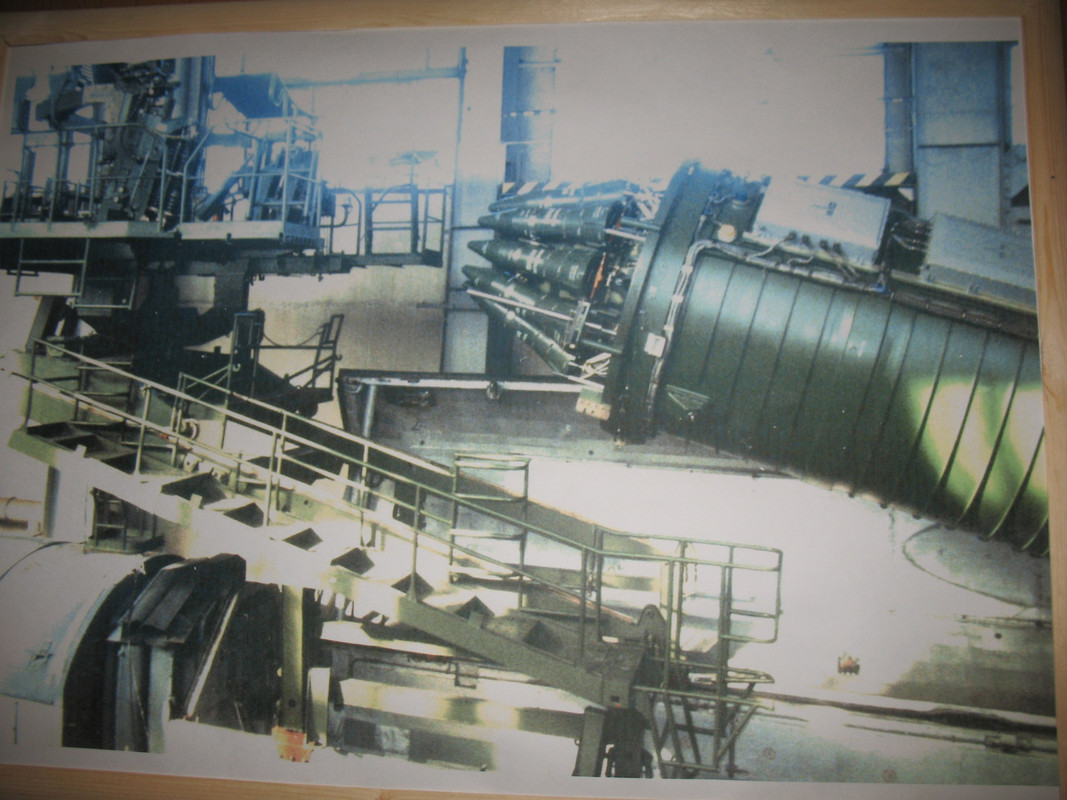
Visible MIRV warheads on an RT-23 missile that carries a 10MIRV of approximately 400kT

Big_Gazza, Eugenio Argentina, LMFS and Hole like this post

PapaDragon- Posts : 13272
Points : 13314
Join date : 2015-04-26
Location : Fort Evil, Serbia
mnztr wrote:On the border, in russian territory. Maybe 200m in.
200 meters could make sense but only if it's above ground
Also, underground tests don't result in cool videos

mnztr- Posts : 2773
Points : 2811
Join date : 2018-01-21
PapaDragon wrote:mnztr wrote:On the border, in russian territory. Maybe 200m in.
200 meters could make sense but only if it's above ground
Also, underground tests don't result in cool videos
Above ground is too damaging for the environment. You don't need videos when the ground is shaking.

PapaDragon- Posts : 13272
Points : 13314
Join date : 2015-04-26
Location : Fort Evil, Serbia
mnztr wrote:PapaDragon wrote:mnztr wrote:On the border, in russian territory. Maybe 200m in.
200 meters could make sense but only if it's above ground
Also, underground tests don't result in cool videos
Above ground is too damaging for the environment. You don't need videos when the ground is shaking.
Of course it's damaging for the environment, that's why you make sure it's as far away from your territory as possible or at least close to enemies in order to share the fun
If you fire one off underground maybe couple of thousand people will notice, above ground everyone with internet will notice, even retarded ones who are the main target audience
Everyone had plenty of warning and this is the age of breaking old taboos so do it right or don't do it at all

mnztr- Posts : 2773
Points : 2811
Join date : 2018-01-21
PhSt wrote:I wanted to ask this question for quite some time, is there a Russian equivalent to the US W88 nuke warhead?
Apparently, the W88 packs a 475 kiloton yield while small enough to fit in mirved missiles, while similar-sized Russian warheads only have 100-150 yield.
So, is this just another NATzO propaganda? What are your thoughts?
Whats the big deal of making a more powerful thermonuclear warhead? Isn't it just a matter of adding a bit more tritium or deutrium? The amount of material that is actually fused in miniscule. So to go from 150 KT to 500KT is really not significant in terms of warhead size.
GarryB and jon_deluxe like this post

franco- Posts : 6706
Points : 6732
Join date : 2010-08-18
- Post n°217
 Stockholm Peace Research Institute (SIPRI)
Stockholm Peace Research Institute (SIPRI)
The Stockholm Peace Research Institute (SIPRI) has published a report stating that nuclear powers are increasing the number of deployed nuclear warheads. As of January 2023, out of 12,512 nuclear warheads, approximately 9,576 were in storage for potential use, an increase of 86 from January 2022, according to the think tank.
Approximately 3,844 warheads (40%) were reported to have been mounted on missiles and aircraft, and about 2,000 (most of them belong to the Russian Federation or the United States) were on high alert - they were equipped with missiles or they were placed at air bases with strategic bombers .
"Nine nuclear states - the US, Russia, Britain, France, China, India, Pakistan, North Korea and Israel - continue to modernize their nuclear arsenals," the organization's report says.
It is noted that last year some countries deployed new weapons systems with nuclear warheads or capable of carrying them. Thus, as of January of this year, Washington increased the number of deployed warheads to 1,770 units (in 2022 it was 1,744), and Moscow - to 1,674 units (last year it was 1,588). London and Paris have the same number of nuclear warheads: 120 and 280, respectively.
According to SIPRI, the total number of warheads, including those decommissioned from the United States of America, is 5244 (against 5428 last year), Russia - 5889 (against 5977 in 2022).
Earlier, Russian presidential spokesman Dmitry Peskov, commenting on statements by US national security adviser Jake Sullivan about new arms control efforts, said that Moscow considers it extremely important to talk with Washington about nuclear weapons. The Kremlin spokesman focused on the need to understand how the proposal of the American side would be formulated.
https://tvzvezda-ru.translate.goog/news/20236121014-AroHE.html?_x_tr_sl=auto&_x_tr_tl=en&_x_tr_hl=en-GB&_x_tr_pto=nui&_x_tr_hist=true
Approximately 3,844 warheads (40%) were reported to have been mounted on missiles and aircraft, and about 2,000 (most of them belong to the Russian Federation or the United States) were on high alert - they were equipped with missiles or they were placed at air bases with strategic bombers .
"Nine nuclear states - the US, Russia, Britain, France, China, India, Pakistan, North Korea and Israel - continue to modernize their nuclear arsenals," the organization's report says.
It is noted that last year some countries deployed new weapons systems with nuclear warheads or capable of carrying them. Thus, as of January of this year, Washington increased the number of deployed warheads to 1,770 units (in 2022 it was 1,744), and Moscow - to 1,674 units (last year it was 1,588). London and Paris have the same number of nuclear warheads: 120 and 280, respectively.
According to SIPRI, the total number of warheads, including those decommissioned from the United States of America, is 5244 (against 5428 last year), Russia - 5889 (against 5977 in 2022).
Earlier, Russian presidential spokesman Dmitry Peskov, commenting on statements by US national security adviser Jake Sullivan about new arms control efforts, said that Moscow considers it extremely important to talk with Washington about nuclear weapons. The Kremlin spokesman focused on the need to understand how the proposal of the American side would be formulated.
https://tvzvezda-ru.translate.goog/news/20236121014-AroHE.html?_x_tr_sl=auto&_x_tr_tl=en&_x_tr_hl=en-GB&_x_tr_pto=nui&_x_tr_hist=true
GarryB, kvs, lancelot, jon_deluxe and Podlodka77 like this post

PhSt- Posts : 1203
Points : 1209
Join date : 2019-04-02
Location : Canada
Just an idea that I happen to come up today, because NATO has an addiction to expansion, Russia needs to update its nuclear weapons doctrine where the number of its strategic and tactical nukes will depend on the size of a hostile military block, in this case NATO. The Idea is simple. lets say Russia alots 5000 nukes for the US, 5000 nukes for Canada, maybe 2000 nukes for the UK because of its small size, so on and so forth. Then, because Finland had expanded NATO territory, Russia will have to add another 5000 nukes to its arsenal for use against Finland.
And the 5000 nukes per country is not an exaggeration. Its important for Russia to turn the planet into a powder keg to ensure its survival. Guaranteed Extinction of NATO is essential.
And the 5000 nukes per country is not an exaggeration. Its important for Russia to turn the planet into a powder keg to ensure its survival. Guaranteed Extinction of NATO is essential.
The-thing-next-door likes this post

lyle6- Posts : 2187
Points : 2181
Join date : 2020-09-14
Location : Philippines
The US has no active fissile material reprocessing capability since the 1990s so all their nuclear warheads have steadily decreased in yield over the years. The sitting US president also cancelled the plans to reacquire this capability.
kvs, GunshipDemocracy, zardof and The-thing-next-door like this post

kvs- Posts : 15130
Points : 15267
Join date : 2014-09-11
Location : Turdope's Kanada
I am suspicious about this. The self-anointed masters of the universe would not allow such a degradation of a key tool of power.
So we are not getting the real story about US warhead manufacturing and nuclear reprocessing capacity.
So we are not getting the real story about US warhead manufacturing and nuclear reprocessing capacity.

Arrow- Posts : 2719
Points : 2711
Join date : 2012-02-12
fissile materials do not age as quickly in nuclear weapons. Plutonium and its decay products can be deployed in warheads for more than 60 years. Instead, they must replenish the tritium in the first stage booster.
kvs and owais.usmani like this post

GarryB- Posts : 38978
Points : 39474
Join date : 2010-03-30
Location : New Zealand
This thread is about strategic nuclear forces, for attacking Finland or Poland they wont need strategic nukes... nukes on top of Iskander and short range cruise missiles will suffice and there is no limit on theatre nukes.

lyle6- Posts : 2187
Points : 2181
Join date : 2020-09-14
Location : Philippines
Is it? The state of the US now does not inspire confidence that the people in charge are conscious stewards of the country and its potential. The opposite really.kvs wrote:I am suspicious about this. The self-anointed masters of the universe would not allow such a degradation of a key tool of power.
So we are not getting the real story about US warhead manufacturing and nuclear reprocessing capacity.
And how do you think tritium is produced in the first place?Arrow wrote:fissile materials do not age as quickly in nuclear weapons. Plutonium and its decay products can be deployed in warheads for more than 60 years. Instead, they must replenish the tritium in the first stage booster.
kvs and The-thing-next-door like this post

Arrow- Posts : 2719
Points : 2711
Join date : 2012-02-12
And how do you think tritium is produced in the first place wrote:
In nuclear reactors with lithium6.
owais.usmani likes this post

lyle6- Posts : 2187
Points : 2181
Join date : 2020-09-14
Location : Philippines
You're so close. Like index finger and thumb close that you can't fit a paper close.Arrow wrote:
In nuclear reactors with lithium6.
|
|
|


